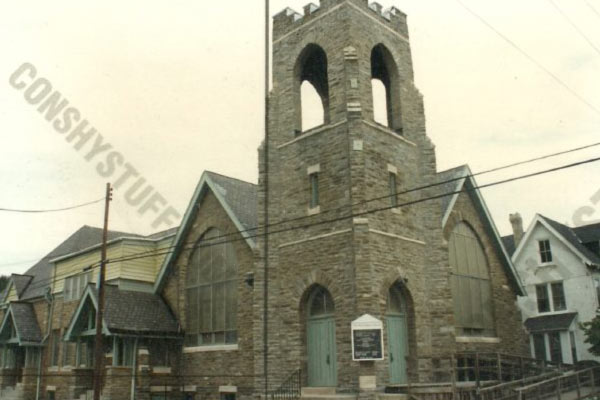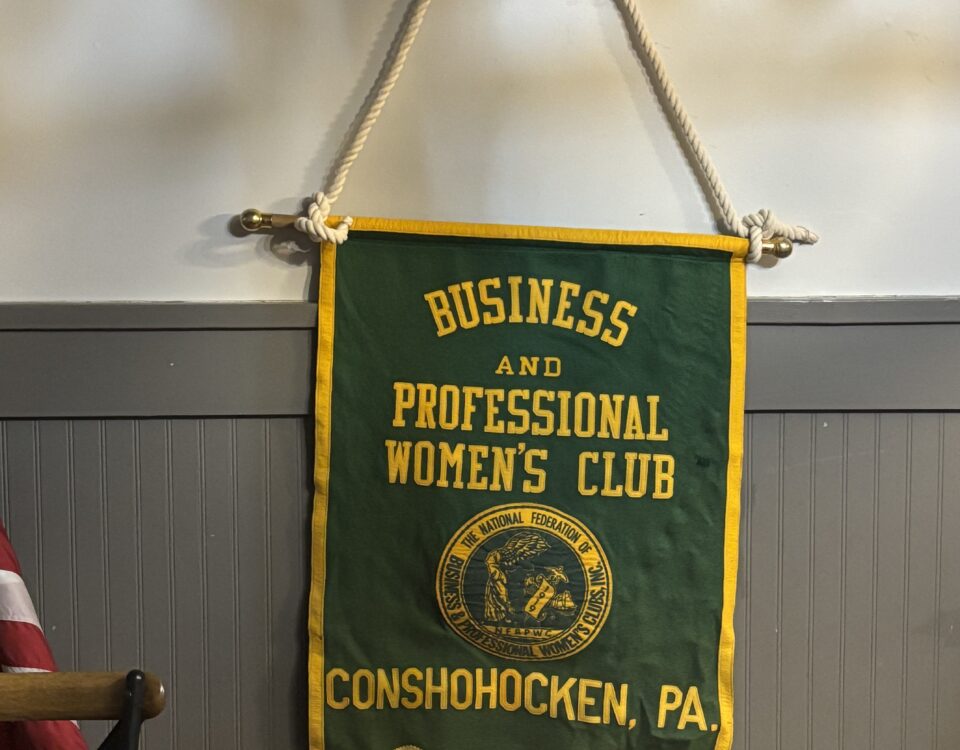
Lenny Wasmanski – Rest Easy old Friend
October 17, 2018
Casualties of a World War – The Way is Was in Conshohocken a Century Ago – by Jack Coll
November 9, 2018Conshohocken’s Only Hospital – The Influenza Epidemic of 1918

CONSHOHOCKEN’S ONLY HOSPITAL
THE INFLUENZA EPIDEMIC OF 1918
By Jack Coll
World War I took a toll on the lives of Conshohockenites, and worldwide, sixteen million lives were sacrificed. The influenza epidemic that swept the world in 1918 killed an estimated fifty million people. One-fifth of the world’s population was attacked by this deadly virus, forcing the borough of Conshohocken to open a hospital to handle the many flu-bitten residents.
An emergency hospital was established in the Conshohocken Baptist Church located at Fourth Avenue and Harry Street. Dr. George Highley, a Fayette Street resident and retired physician was appointed by a committee to take charge of the hospital. Margaret Ruth of East Fourth Avenue, a trained nurse gave up her employment to be the supervising nurse and recruited the Sisters of St. Joseph who were teachers at St. Matthew’s School to help aid and nurse the sick as the schools had been closed.
The church hospital was established in a few days and the managers of the Pines Summer Home offered the entire fleet of iron bed stands, mattresses, bedding, linens and wash-stands.
The church committee and board of directors on the Health Committee included Samuel Roberts, Dr. McKenzie, William Little, James Morrison, John Irwin, Richard Bate, Miles Stemple and John Harrold. The hospital opened on October 12, 1918, within the first day of operation 17 patients were admitted into the 40 Bed Hospital. Residents with motor-cars volunteered as ambulances transporting the sick to the church hospital. By the following day there were 33 patients with many of the borough’s residents having already passed away from the virus.
It was reported by the Conshohocken Recorder Newspaper on October 11, 1918 that three members of one family had fallen ill and died from the virus. On October 12 there was a triple funeral from the house of Samuel Davis, 229 East Eighth Avenue, his son, daughter and son-in-law all died from the plague. The day before the funeral it was reported that Mrs. Jawood Pierson died on Thursday, her husband was buried on Wednesday. They left two young children behind. Also John Zotowski whose wife died a week earlier of the plague, was fatally stricken and they left behind several young children.
It was also reported in the Recorder that Undertakers were unable to arrange dates for funerals owing to the difficulty in getting graves dug.
Conshohocken had quite a few undertakers back in 1918, most of them didn’t have a “Funeral Home,” they simply prepared the body and prepped them for a viewing from the deceased own home, hence the words “funeral parlor,” when the deceased was laid out in their own living room.
A few of the more prominent undertakers back in 1918 included Thomas Carroll, John Blackburn, William Miller, Michael Moore, John Shinners, Charles Comfort and George Wills among others.
One of the undertakers died as a result of the plague, William J. Miller of 124 East Third Avenue. During the epidemic, Mr. Miller had a great number of funerals and being unable to secure sufficient help, he was compelled to work night and day and became exhausted. He had been ill for more than a week but felt compelled to continue his work as the number of deaths from the epidemic influenza made such great demands on all the undertakers that they were unable to meet the entire death request. After conducting four funerals on a Saturday he laid down to rest and passed away. Mr. Miller was a member of the School Board for more than 25 years.
Early admissions to the hospital included Anthony Baronowski, two years old; Peter Zuzywacy, two years old; Mary Zuzywacy, 8 months old, Walter Zuzywacy and Mrs. Walter Zuzywacy, Sallie Donetto, five years old; Mary Donetto, seven years old; Frank Gwootz, Mrs. Frank Gwootz; Mary Gwootz, three years old; Frank Gwootz, one year old; Charles Roop, Mrs. Anna Wodarski and Stacie Wodarski just to name a few of the dozens of Conshohocken and area residents that checked in at the hospital. As you can see the flu wiped out entire families.
Conshohocken schools and church services were canceled. No public gathering of any kind was permitted, and no residents were permitted to go to funerals if it wasn’t a family member being buried. The second day the hospital was in operation, a young pregnant woman gave birth to a healthy baby girl. Within four days, family members removed the baby and took her directly to St. Mary’s Church to be baptized.
At one point the Schuylkill Iron Works lost half of their working force due to illness related to the plague. Carroll Meyers was employed by the Schuylkill Iron Works and was sent around to check on employees suffering from the plague. When Meyers checked in on the condition of an employee that lived on Old Elm Street he found the father and son very ill in bed, unable to care for themselves. The mother and daughter had died of the flu a week earlier. Both men were removed to the hospital, where they recovered. Had it not been for Meyers, they would have certainly died.
All residents traveling outdoors were asked to wear a mask over their faces, and residents who had an ill family member were forced to hang a black scarf across their front door, warning potential visitors to stay away.
The influenza epidemic was gone as quickly as it started. The Baptist Church Hospital opened on October 12, 1918, and remained in service until October 29, 1918. Dozens of borough residents risked their lives to save hundreds of borough residents. Conshohocken had never had a hospital before the influenza outbreak, nor has it had one since.
When it was over, 130 residents from Conshohocken, Plymouth, West Conshohocken and Whitemarsh had died. The influenza death data compiled by William Neville, Montgomery County Coroner were as follows:
Male Female Total
Conshohocken 39 39 78
West Conshohocken 7 3 10
Plymouth 18 12 30
Whitemarsh 7 5 12
(Remember Plymouth and Whitemarsh weren’t quite as populated back then)
When the schoolchildren were permitted to return to school later in the year, they would often play in the schoolyard, and the young girls would skip rope in rhyme with:
I had a little bird,
Its name was Enza.
I opened the window,
And in-flu-enza
For more information on the 1918 Influenza Epidemic in and around Montgomery County the Historical Society of Montgomery County will be holding a program this Thursday, October 25, 2018, 7:00-8:00 pm at their headquarters located at 1654 DeKalb Street in Norristown. It promises to be a very interesting program.

